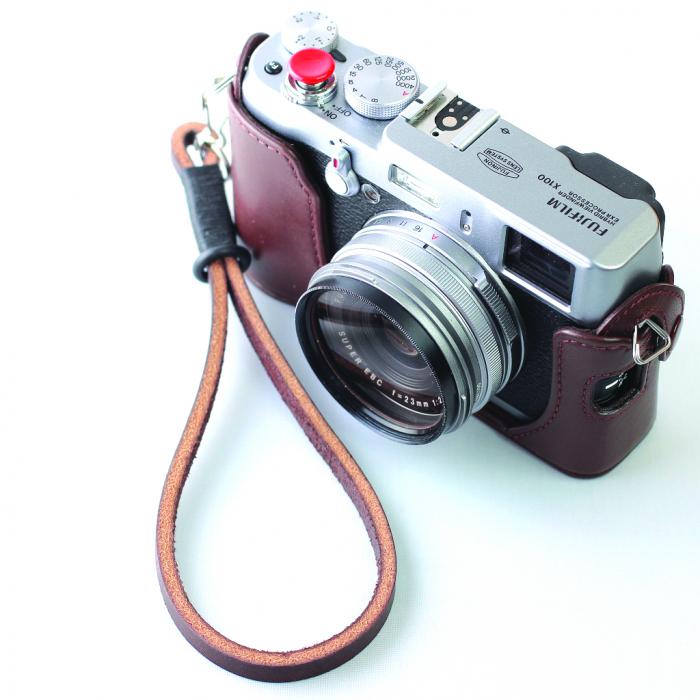Phuket TECH: The mirrorless revolution

PHUKET: Here in Thailand, which has earned itself the title of world “selfie” capital, pictures are important. Whether it’s locals snapping shots while out and about to upload to Facebook, tourists looking for that exotic portrait from their trip abroad or the pros clicking away to beef up their stock portfolio, cameras are everywhere, all the time.
Although it might seem as if many people are shooting with their mobile phones (Iphones are the most popular camera in the Flickr community, right behind Canon), the market for digital devices dedicated to capturing images is strong and growing.Part of the momentum behind industry growth, especially in Asia Pacific, is growing incomes and the increasing prosperity of consumers. With people already obsessed with taking pictures and the likelihood of finding themselves with a little more spending money, it doesn’t take a market analyst to figure out where this is going.
Out of all consumer electronics, digital cameras are one of the strongest segments on the market. The desire and demand for versatile and high quality cameras is obvious – just take a look at how often major brands are updating existing products and releasing new ones.
Gaining huge momentum and popularity in the past few years among enthusiasts are interchangeable lens cameras (ILCs) of the mirrorless variety. What started out as a promising twig on the evolutionary tree of imaging technology is now maturing into a solid branch. With weaknesses and limitations being addressed, recent iterations of select mirrorless systems are getting some solid attention from enthusiasts and professionals alike.
What exactly is a mirrorless camera? In a basic sense, a mirrorless camera is an ILC (usually) that instead of relying on a mirror and pentaprism for composing a photo through the lens like a digital single lens reflex (DSLR) camera, relays the scene in live-view through the sensor and displays it on a screen. However, since composing photos on a screen is often not ideal, electronic view finders (EVFs) have been added which mimic the functionality of DSLR view finders.
This is not really a new concept but one championed by digital point-and-shoots and mobile phone cameras. Eliminating dependence on the mirror has some immediate advantages such as: reduced body size, quieter operation and less moving parts, but mirrorless systems have been plagued by certain short-comings like slow autofocus and fewer lens options which have kept them delegated to the amateur and enthusiasts realm.
Fuel was thrown onto the mirrorless fire when Sony introduced the NEX series, especially the NEX-6 which offered an APS-C size sensor, increased high ISO sensitivity and performance, 1080 HD video capabilities and other features which boosted its versatility. Toward the end of last year Sony took it a step farther by introducing the full-frame-sensor-sporting A7 and A7R, flaunting 24 and 36 mega-pixels respectively.
Fujifilm has also emerged as a strong player in the mirrorless game with the XA-1, popular X100S, the X-Pro1 and most recently, the XT-1. The X100 and subsequent upgrade, the X100s were very popular and critics gave them rave reviews despite having a non-interchangeable 23mm f2.0 lens.
The latest incarnation from Fujifilm, the XT-1, undoubtedly has some pros taking a long, hard look at the reality of adopting a mirrorless system. So far, reviews have made it mighty enticing, raving about the good low light capabilities, fast and accurate auto focus, accessible controls, high image quality, sexy retro styling and professional grade weather sealed body.
One of the most important factors that has and will continue to prevent us DSLR shooters from making the leap to mirrorless, is the comparatively minimal selection of lenses and accessories. For instance, the Sony A7/A7R is a full-frame mirrorless system which is a first for Sony, which means there were no lenses designed specifically for the camera. Lenses are constructed based on a number of factors, one being the distance between the sensor and rear element of the lens – a distance that is shorter on a camera with no mirror. They did release five lenses with the camera and promise another 10 to choose from in 2015 but it is a big step for a photographer that has a long-established relationship with a camera system to start from scratch with a new one. It is possible to add a lens adapter into the equation but they add more bulk to the setup, incur an additional cost and generally reduce the image quality.
As more people find faith in, and join, the mirrorless revolution, the offerings on the market will continue to grow in quality and quantity. The long-lived, robust, mirror-slapping DSLRs are not going to disappear anytime soon but we will surely see the big dogs, Canon and Nikon, take the high-end mirrorless ILC market a little more seriously and dip their toes in the proverbial mirrorless waters. Come on in guys… the water’s fine.
— Jeremie Schatz
Join the conversation and have your say on Thailand news published on The Thaiger.
Thaiger Talk is our new Thaiger Community where you can join the discussion on everything happening in Thailand right now.
Please note that articles are not posted to the forum instantly and can take up to 20 min before being visible. Click for more information and the Thaiger Talk Guidelines.
Leave a Reply
You must be logged in to post a comment.









